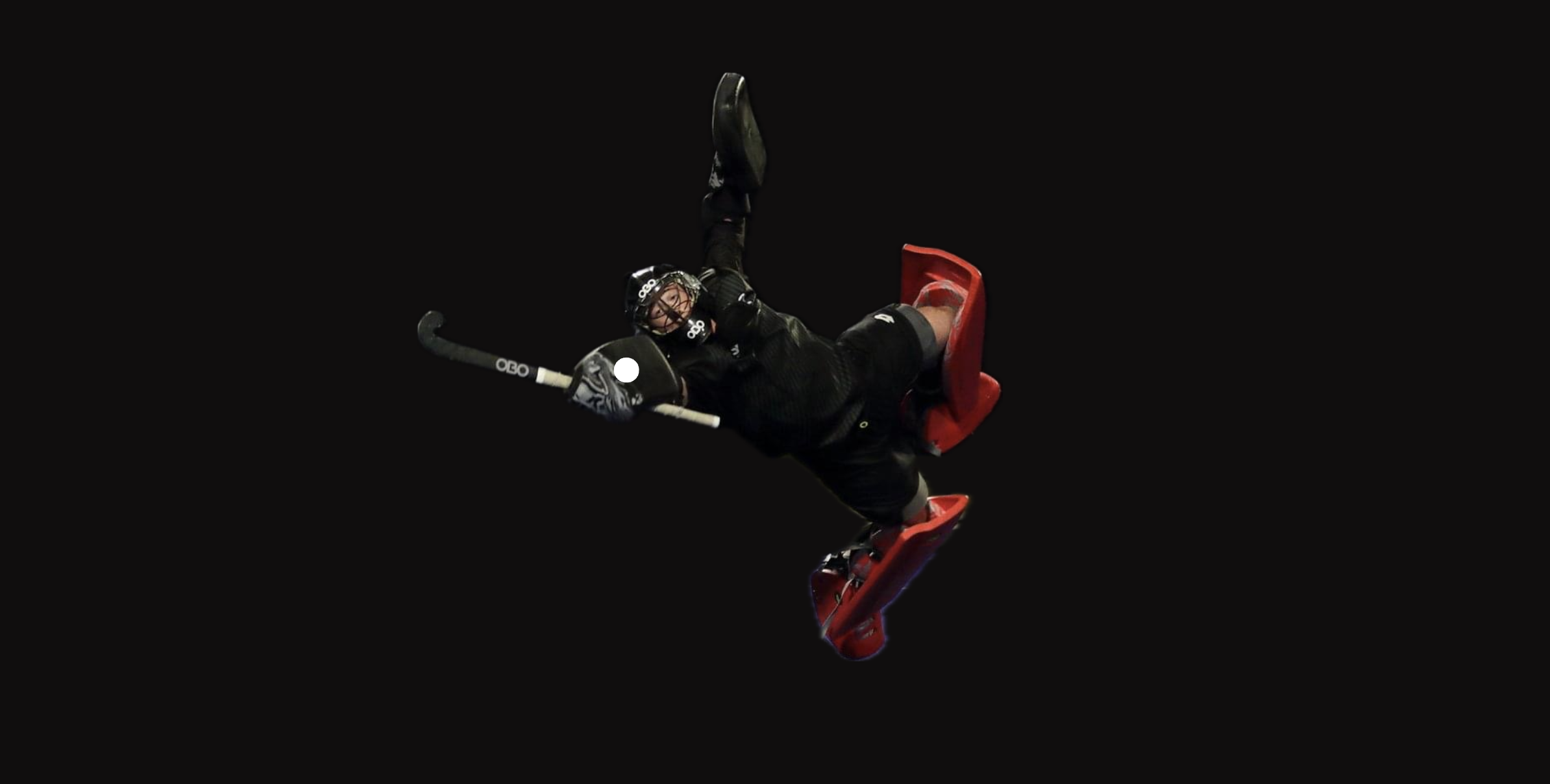As a field hockey goalkeeper, lightning-fast reactions can make the difference between a spectacular save and watching the ball fly past you into the goal.
Playing more hockey consistently, both indoor and outdoor, naturally develops your reactions over time. The older and more experienced you get, the sharper your responses become, but it’s a process that takes patience and practice.
I sometimes find myself catching things without even realising it, dropping my phone or other items and reacting instinctively. This shows just how much reaction training carries over into everyday life… and on the pitch.
In this guide, I’ll break down how hockey, specific drills, and mental preparation all contribute to elite reaction times.
Building Natural Reaction Speed
The elephant in the room
One of the most overlooked ways to improve reactions is simply… playing more hockey.
Repetition, game scenarios, and live shots all stimulate your nervous system. If you also play indoor hockey, it’s incredible for reaction development because the ball comes at you faster and closer, forcing you to respond instinctively.
For example, after returning from the 2023 Indoor World Cup in South Africa, my first outdoor session felt like my gloves were magnets to every ball …thanks to the fast indoor pace.
Another key takeaway is that reactions come with age. As your game sense develops, so does your ability to anticipate and react to shots. Don’t expect overnight results …reaction improvement is a long-term journey.
The Science Behind Goalkeeper Reactions
Modern sports science shows that experienced goalkeepers have faster reaction times (230–260 ms) than novices (300–320 ms). I used this webiste to test my reastions for fun …my best set is 259ms!
Goalkeeprs having faster reactions isn’t just natural talent, it’s the result of training and neurological adaptation.
The reaction process involves:
- Sensory Input: Detecting ball movement and trajectory e.g. a dragflick at a PC.
- Neural Processing: Brain analyzes speed, spin, and direction e.g. is this ball going low-stick or high stick? How fast is is coming?
- Motor Response: Signals sent to muscles for physical reaction e.g. your arm or foot moves towards the ball for the save!
Because field hockey shots are so fast, initial movements must be almost instantaneous which makes reaction training critical. You can explore more about the science of hand-eye coordination here.
Neuroplasticity & Improvement
The good news? Reaction time can improve through neuroplasticity. Repeated training helps the brain rewire itself for faster visual and motor processing. Techniques like visualization, relaxation, and concentration enhance reaction performance (source).
Drills to Increase Reaction Speed
Tennis Ball Training
This is simple but effective. I usually find myself playing with a tennis ball around the house. In these drill you can add movements like lunges or side steps simulates real goalkeeper saves.
Wall Reaction Training:
- Stand 5 feet from a wall and throw a tennis ball.
- React quickly and catch with one hand.
- Alternate hands and add squats or push-ups to simulate game fatigue..
Partner Tennis Ball Training:
- Partner throws balls at different heights, speeds, and angles.
- Focus on tracking the ball and making clean catches.
- Train at higher speeds rather than starting slow. This forces your body to adapt faster (source).
Tennis Ball Drop Test:
- Partner drops ball from various heights.
- Attempt to catch before the second bounce.
- Gradually decrease height to increase difficulty.

Reaction Balls

These balls bounce in random directions when dropped or thrown against the wall. Use these balls to mimic the tennis ball drills above.
- Throw reaction balls against a wall or have a partner drop them from waist height.
- Catch before the second bounce.
- Increase difficulty with one-hand catches or lateral movement (source).
The Crazy Catch
The Crazy Catch is invaluable …and fun.
One thing I noticed in myself:
If I throw the ball really hard at the wall or Crazy Catch, it sped up my reaction training progress.
…this is because training at higher speeds rather than building up slowly helps your body and mind learn to react instinctively (external reference).

Hand-Eye Coordination & Eye Training
Juggling & Target Practice
- Juggle 2–3 balls to build coordination.
- Practice tossing between hands or against a wall.
- Place targets in goal corners and strike balls while defending to improve precision.
Eye Movement Exercises
- Eye Circles, Finger Follow, and Saccadic Movements help track fast objects.
- Smooth pursuit and vestibulo-ocular drills improve anticipation and focus (source).

Mental Preparation for Reactions

Visualization Techniques
- Mentally rehearse saves, positioning, and distribution.
- Use the PETTLEP imagery method for immersive visualization (source).
- Visualize yourself as a shark (aggressive, reactive) and a goldfish (short memory, quick reset).
Pre-Game Mental Prep
- Deep breathing and focus routines calm nerves (source).
- Positive self-talk enhances confidence during high-pressure moments.
Pressure Management
- Meditation and visualization reduce anxiety.
- Stay mentally engaged and recover quickly from mistakes (source).
Conclusion: Level Up Your Reactions
Developing elite reactions takes time, consistent hockey play, and mental preparation.
Incorporate indoor hockey, tennis ball and reaction ball drills, and Crazy Catch exercises into your routine.
Don’t forget visualization and mental resilience, I find they’re just as important as physical skill.
Want to dive deeper? Check out all my field hockey articles for more training tips, drills, and insights. Every small improvement off the field translates to bigger saves on it.


Leave a Reply
You must be logged in to post a comment.